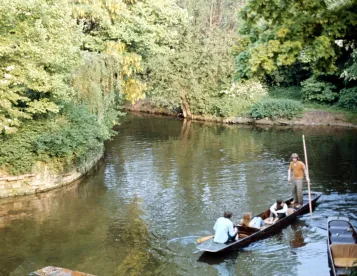On December 11, 2018, the Army Corps of Engineers and the United States Environmental Protection Agency jointly proposed a new Waters of the United States (WOTUS) definition. The two agencies intend for the proposal to replace the Clean Water Rule that was issued by the Obama Administration in 2015.
The 2015 rule automatically confers federal jurisdiction over several categories of waters, including traditional navigable waters, interstate waters, territorial seas, impoundments of jurisdictional waters, tributaries, and adjacent water. It also lists five specific types of “similarly situated” waters that are subject to a case-by-case analysis to determine whether there is a “significant nexus” that would provide jurisdiction. The 2015 rule also contains exclusions from jurisdiction for some water features, including certain ditches, groundwater, erosional control features, and stormwater control features.
The Army Corps of Engineers and the United States Environmental Protection Agency intend for the 2018 proposed rule to further clarify jurisdictional questions, eliminate case-by-case determinations, and narrow Clean Water Act jurisdiction to align with Justice Scalia’s opinion in Rapanos v. United States, 547 U.S. 715 (2006).
What’s a WOTUS?
The agencies have advanced a WOTUS definition that encompasses “relatively permanent flowing and standing waterbodies that are traditional navigable waters in their own right or that have a specific connection to traditional navigable waters, as well as wetlands abutting or having a direct hydrologic surface connection to those waters.”
Specifically, the newly proposed rule outlines six categories of waters that would be considered waters of the United States, including:
- traditional navigable waters
- impoundments
- tributaries
- certain ditches
- certain lakes and ponds
- adjacent wetlands
Notably, the proposed rule also expressly excludes certain waters from the definition of WOTUS:
- waters not otherwise expressly included in the above categories of jurisdictional waters
- groundwater
- ephemeral surface features and diffuse stormwater run-off
- ditches that do not fall into the category of jurisdictional ditches
- prior converted cropland
- artificially irrigated areas
- artificial lakes and ponds constructed in upland that are not otherwise covered by the category of jurisdictional lakes and ponds
- water-filled depressions constructed in upland for construction or mining
- stormwater control features
- wastewater recycling features constructed in upland
- waste treatment systems
Other Proposed Updates
The 2018 proposed rule differs from the 2015 rule in several other significant ways, as well.
It eliminates case-by-case determinations of significant nexus and excludes “ephemeral streams” and “ephemeral features.” from the “tributaries” category. The proposal also limits the 2015 rule’s “adjacent waters” to “adjacent wetlands,” and further limits “adjacent wetlands” to those that abut a jurisdictional water or have a direct hydrological surface water connection.
Whereas the 2015 rule generally includes ditches in the definition of “waters of the United States” unless expressly excluded, the proposal generally excludes ditches unless the “tributary” criteria are met and the ditch either alters or relocates a tributary or is constructed on an adjacent wetland.
The proposal also refines or modifies a number of exclusions from the 2015 rule. For example, it offers several refinements to the preamble language related to the exclusion for water-filled depressions created in upland as a result of certain activities, like mining. The 2018 proposed rule also clarifies the exceptions for stormwater control measures, wastewater recycling structures, and waste treatment systems.
What Happens Next?
The agencies are taking comment on the proposal for sixty days after publication in the Federal Register. The agencies also scheduled an informational webcast for January 10, 2019, and a public hearing in Kansas City, Kansas on January 23, 2019, however both the webcast and public hearing are postponed due to the government shutdown. The agencies will notify the public of the revised date for the public hearing, the start of the public comment period, public webcast, and other outreach activities after appropriations have passed.




 />i
/>i

